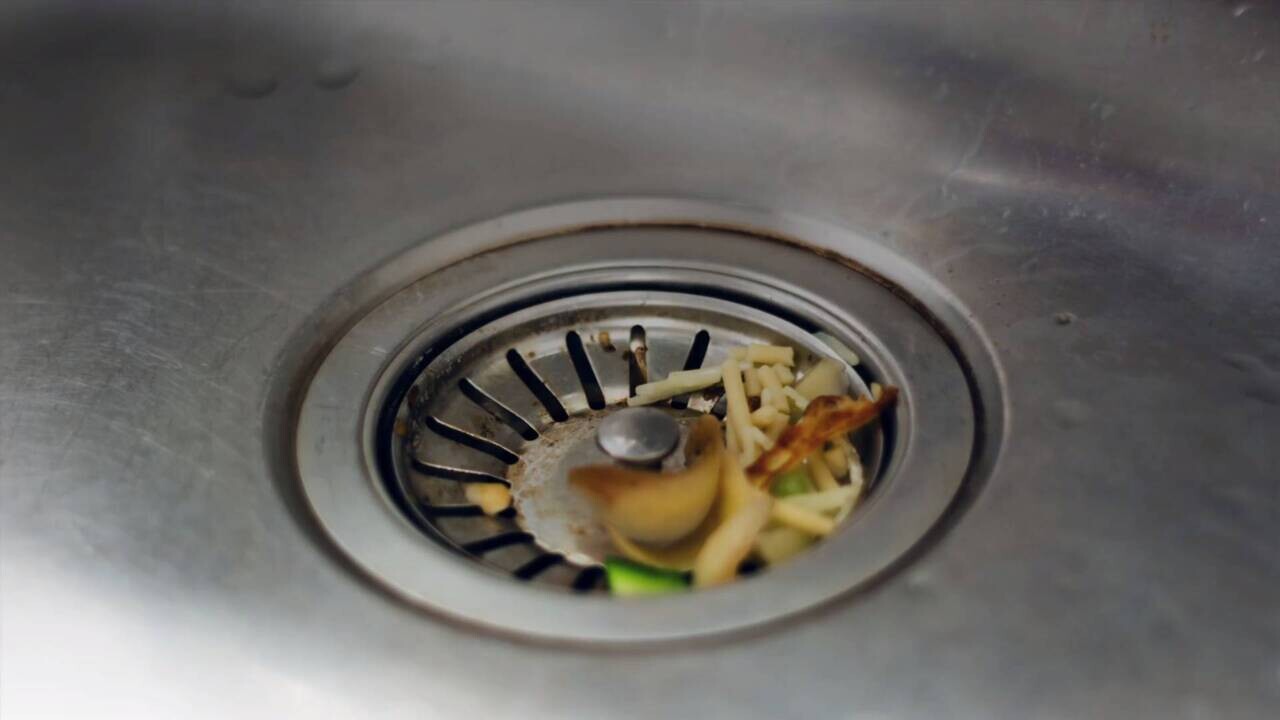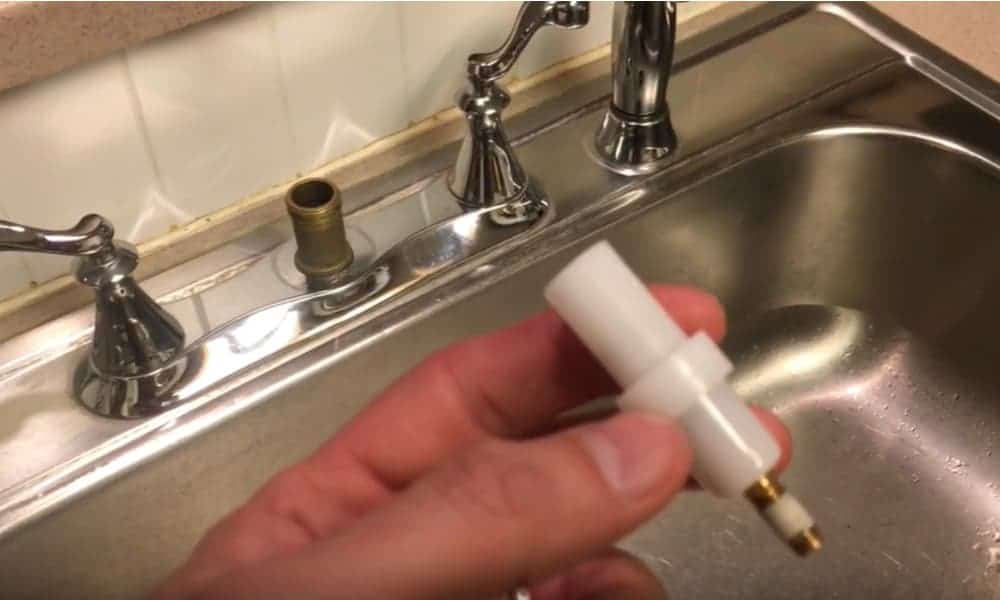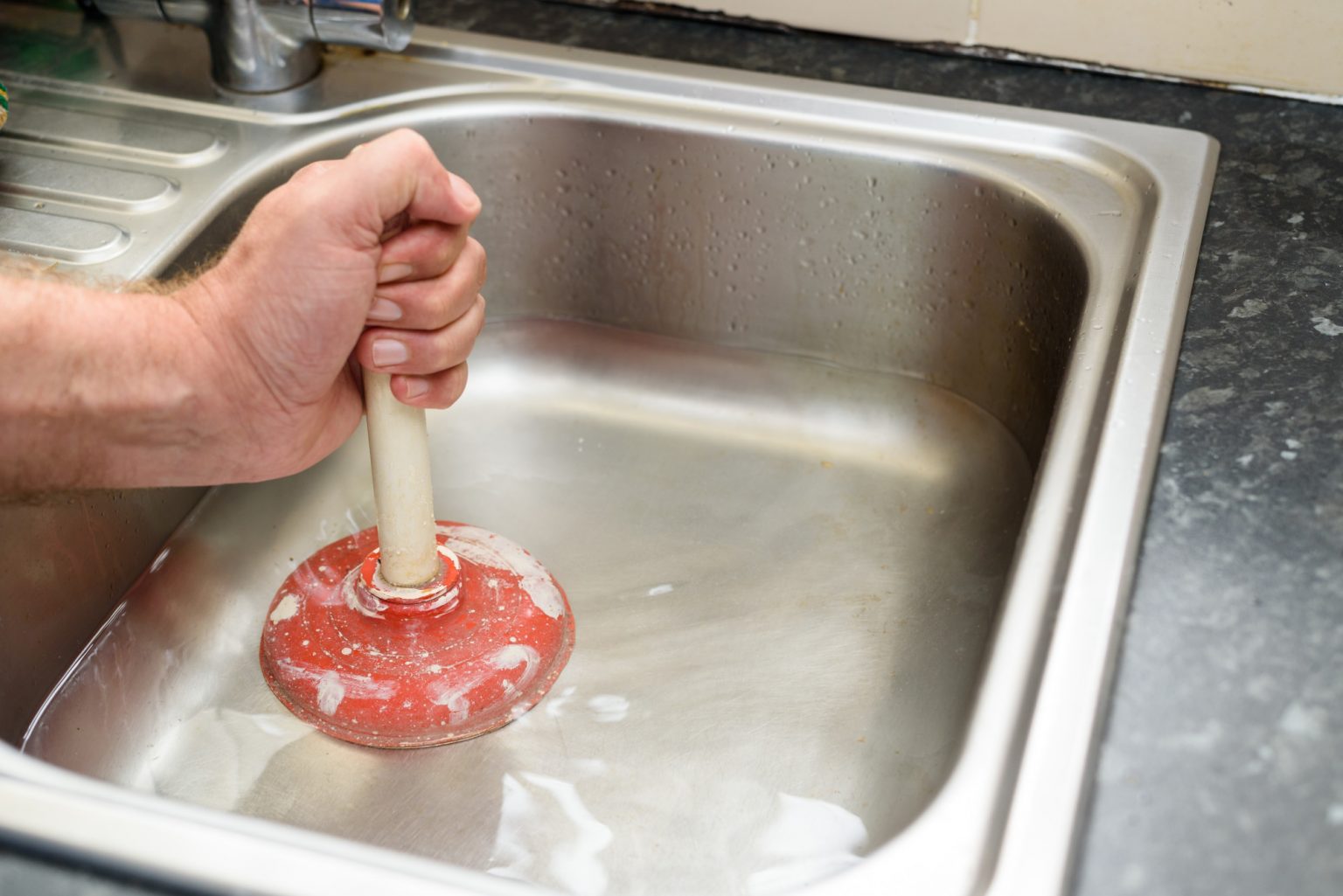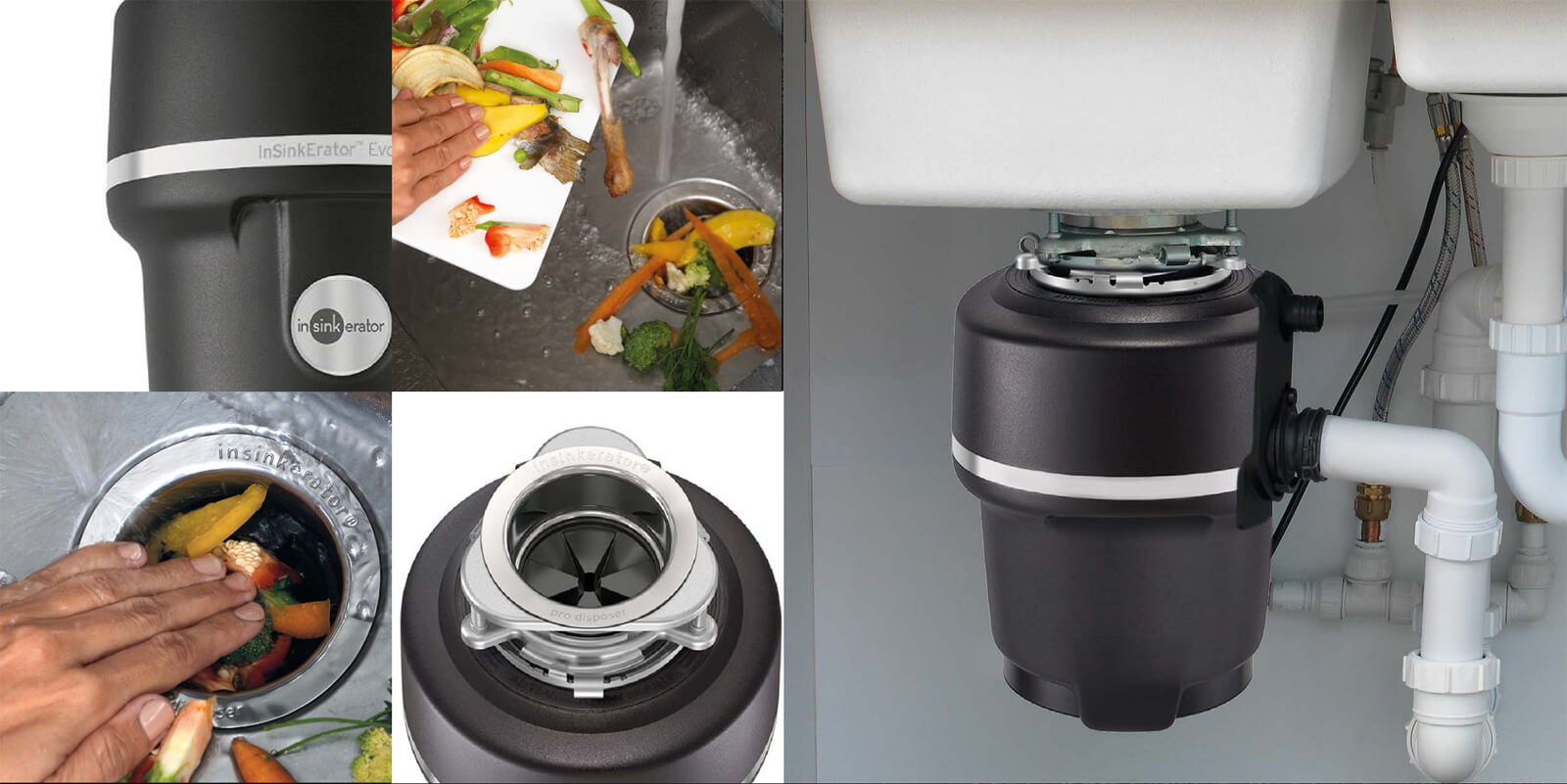Dealing with a clogged kitchen sink can be a frustrating and messy experience, especially if you have an Insinkerator disposal system. However, there are a few simple steps you can follow to unclog your kitchen sink and get your Insinkerator running smoothly again. The key is to act quickly and use the right methods to avoid further damage to your sink and disposal system. Start by turning off the power to your Insinkerator disposal system. This is important for your safety and to prevent any potential damage to the system. You can do this by unplugging it from the electrical outlet or turning off the circuit breaker. Next, use a plunger to try and dislodge the clog. Place the plunger over the drain and push down firmly, then pull up quickly to create suction. Repeat this a few times until the water starts to drain. If the plunger doesn't work, move on to using a drain snake or other DIY methods.1. How to Unclog a Kitchen Sink with Insinkerator
If the plunger doesn't work, there may be a more serious issue causing the clog in your Insinkerator kitchen sink. One common cause is food scraps and debris getting stuck in the disposal system. This can happen if you don't run enough water while using the disposal, or if you put large or fibrous food items down the drain. To troubleshoot this, you can try using a drain snake to physically remove any debris that may be stuck in the disposal. You can also try pouring a mixture of hot water and dish soap down the drain to help break up any buildup. If these methods don't work, it may be time to call in a professional plumber for assistance.2. Troubleshooting a Clogged Insinkerator Kitchen Sink
If you prefer to try and unclog your Insinkerator kitchen sink on your own, there are a few DIY methods you can try. One popular method is using a mixture of baking soda and vinegar. Start by pouring half a cup of baking soda down the drain, followed by half a cup of vinegar. Let the mixture sit for a few minutes, then pour hot water down the drain to flush it out. You can also try using a combination of salt and boiling water. Pour half a cup of salt down the drain, followed by a pot of boiling water. This can help to dissolve any buildup and break up the clog.3. DIY Methods for Unclogging an Insinkerator Kitchen Sink
In addition to food scraps and debris, there are a few other common causes of a clogged kitchen sink with an Insinkerator disposal system. One is putting non-food items down the drain, such as utensils or paper products. Another is pouring grease or oil down the drain, which can solidify and cause a buildup over time. It's important to be mindful of what you put down your kitchen sink to avoid clogs and potential damage to your Insinkerator. Make sure to scrape excess food into the trash before using the disposal, and dispose of grease and oil in a separate container.4. Common Causes of a Clogged Kitchen Sink with Insinkerator
As mentioned earlier, a plunger can be an effective tool for unclogging an Insinkerator kitchen sink. However, it's important to use the right plunger for the job. A standard sink plunger may not be as effective as a toilet plunger, which has a flange that can create a better seal over the drain. When using a plunger, make sure to cover the entire drain opening and create a tight seal. This will help to create the necessary suction to dislodge the clog. You may also need to add a little bit of water to the sink to create more pressure.5. Using a Plunger to Unclog an Insinkerator Kitchen Sink
Chemical drain cleaners can be a tempting quick fix for a clogged Insinkerator kitchen sink. However, they can also be very harmful to your pipes and disposal system, as well as the environment. These harsh chemicals can cause damage and corrosion to your pipes, and can also be harmful to your health if ingested. If you do choose to use a chemical drain cleaner, make sure to follow the instructions carefully and use protective gear. Keep in mind that this may not be a long-term solution and may not completely dissolve the clog.6. Chemical Drain Cleaners for a Clogged Insinkerator Kitchen Sink
In some cases, the clog may be located in the sink trap rather than the disposal system. The sink trap is the curved pipe located under the sink that connects to the disposal. To access it, you will need to turn off the power to your Insinkerator and use pliers to loosen the nuts connecting the trap to the pipes. Once the trap is removed, you can clean it out by hand or use a plumbing brush to remove any buildup. Make sure to also check the pipes leading to and from the trap for any potential clogs.7. How to Remove and Clean an Insinkerator Kitchen Sink Trap
If you're unable to unclog your Insinkerator kitchen sink on your own, it may be time to call in a professional plumber. They will have the necessary tools and expertise to diagnose and fix the issue without causing any further damage to your sink or disposal system. A professional plumber can also help to identify any underlying issues that may be causing the clogs, such as a damaged disposal system or improperly installed pipes. This can save you time, money, and headaches in the long run.8. Professional Plumbing Services for a Clogged Insinkerator Kitchen Sink
The best way to deal with a clogged Insinkerator kitchen sink is to prevent it from happening in the first place. This means being mindful of what you put down the drain and regularly maintaining your disposal system. One easy way to prevent clogs is to run cold water while using the disposal and for a few seconds after it's turned off. This helps to flush any debris down the drain and prevent buildup. You can also use a drain strainer to catch larger food scraps and prevent them from going down the drain.9. Preventing Clogs in an Insinkerator Kitchen Sink
Maintaining and caring for your Insinkerator kitchen sink can also help to prevent clogs. This includes regularly cleaning the disposal system by grinding ice cubes and citrus peels, which can help to remove debris and freshen up the system. You should also make sure to regularly check and clean the rubber splash guard in the drain opening. This can become worn or damaged over time and may need to be replaced to prevent leaks and clogs. In conclusion, a clogged Insinkerator kitchen sink can be a nuisance, but with the right methods and preventative measures, you can keep your sink and disposal system running smoothly. Remember to always prioritize safety and use caution when attempting to unclog your sink, and don't hesitate to call in a professional if needed.10. How to Maintain and Care for an Insinkerator Kitchen Sink to Avoid Clogs
How to Fix a Clogged Kitchen Sink Insinkerator

Understanding the Insinkerator
 The Insinkerator is a popular brand of garbage disposal system designed to make kitchen clean-up easier and more efficient. It is installed under the kitchen sink and is used to grind up food scraps, reducing the amount of waste that goes into the trash. However, over time, food particles, grease, and other debris can build up in the Insinkerator, causing it to clog and malfunction. One of the most common problems with the Insinkerator is a clogged kitchen sink, which can be frustrating and inconvenient. But fear not, with the right tools and techniques, you can easily fix a clogged kitchen sink Insinkerator and get your sink and disposal system running smoothly again.
The Insinkerator is a popular brand of garbage disposal system designed to make kitchen clean-up easier and more efficient. It is installed under the kitchen sink and is used to grind up food scraps, reducing the amount of waste that goes into the trash. However, over time, food particles, grease, and other debris can build up in the Insinkerator, causing it to clog and malfunction. One of the most common problems with the Insinkerator is a clogged kitchen sink, which can be frustrating and inconvenient. But fear not, with the right tools and techniques, you can easily fix a clogged kitchen sink Insinkerator and get your sink and disposal system running smoothly again.
Gather Your Tools
 Before you start working on your clogged kitchen sink Insinkerator, it's important to gather all the necessary tools. You will need a pair of pliers, a screwdriver, a bucket, a flashlight, and a snake or auger. Most of these tools can be found in a basic toolkit or can be purchased at your local hardware store. Having these tools on hand will make the process much easier and ensure that you have everything you need to fix the problem.
Before you start working on your clogged kitchen sink Insinkerator, it's important to gather all the necessary tools. You will need a pair of pliers, a screwdriver, a bucket, a flashlight, and a snake or auger. Most of these tools can be found in a basic toolkit or can be purchased at your local hardware store. Having these tools on hand will make the process much easier and ensure that you have everything you need to fix the problem.
Unjam the Insinkerator
 The first step in fixing a clogged kitchen sink Insinkerator is to unjam the disposal unit. Turn off the power to the Insinkerator by unplugging it or turning off the circuit breaker. Next, use a flashlight to look into the disposal unit and locate the source of the jam. You may see food scraps or other debris stuck in the blades. Use tongs or pliers to remove the blockage, taking care not to damage the blades. Once the jam is cleared, turn the power back on and test the disposal to see if it is working properly.
The first step in fixing a clogged kitchen sink Insinkerator is to unjam the disposal unit. Turn off the power to the Insinkerator by unplugging it or turning off the circuit breaker. Next, use a flashlight to look into the disposal unit and locate the source of the jam. You may see food scraps or other debris stuck in the blades. Use tongs or pliers to remove the blockage, taking care not to damage the blades. Once the jam is cleared, turn the power back on and test the disposal to see if it is working properly.
Use a Plunger
 If the Insinkerator is still not functioning properly, the next step is to use a plunger. Fill the sink with enough water to cover the rubber of the plunger. Place the plunger over the drain and push down and pull up several times to create suction. This can help dislodge any remaining debris in the disposal unit. If the water drains, then the clog has been cleared. If not, move on to the next step.
If the Insinkerator is still not functioning properly, the next step is to use a plunger. Fill the sink with enough water to cover the rubber of the plunger. Place the plunger over the drain and push down and pull up several times to create suction. This can help dislodge any remaining debris in the disposal unit. If the water drains, then the clog has been cleared. If not, move on to the next step.
Snake or Auger
 A snake or auger is a long, flexible tool used to remove clogs from pipes. Insert the end of the snake or auger into the drain and turn the handle to maneuver it through the pipes. This will help break up any stubborn clogs and clear the way for water to flow freely. Once you have cleared the clog, run water down the drain to ensure that it is fully cleared.
A snake or auger is a long, flexible tool used to remove clogs from pipes. Insert the end of the snake or auger into the drain and turn the handle to maneuver it through the pipes. This will help break up any stubborn clogs and clear the way for water to flow freely. Once you have cleared the clog, run water down the drain to ensure that it is fully cleared.
Preventing Future Clogs
 To prevent future clogs in your kitchen sink Insinkerator, there are a few simple steps you can take. Avoid putting large amounts of food scraps or grease down the drain, as this can cause buildup over time. Use cold water when running the disposal, as hot water can melt grease and cause it to solidify in the pipes. You can also periodically pour a mixture of hot water, baking soda, and vinegar down the drain to help break up any buildup.
Fixing a clogged kitchen sink Insinkerator may seem like a daunting task, but with the right tools and techniques, it can be easily resolved. By following these steps and taking preventative measures, you can ensure that your Insinkerator continues to run smoothly and efficiently. Say goodbye to clogged kitchen sinks and hello to a clean and functioning disposal system.
To prevent future clogs in your kitchen sink Insinkerator, there are a few simple steps you can take. Avoid putting large amounts of food scraps or grease down the drain, as this can cause buildup over time. Use cold water when running the disposal, as hot water can melt grease and cause it to solidify in the pipes. You can also periodically pour a mixture of hot water, baking soda, and vinegar down the drain to help break up any buildup.
Fixing a clogged kitchen sink Insinkerator may seem like a daunting task, but with the right tools and techniques, it can be easily resolved. By following these steps and taking preventative measures, you can ensure that your Insinkerator continues to run smoothly and efficiently. Say goodbye to clogged kitchen sinks and hello to a clean and functioning disposal system.







/how-to-unclog-a-kitchen-sink-2718799_sketch_FINAL-8c5caa805a69493ab22dfb537c72a1b7.png)


































































:max_bytes(150000):strip_icc()/how-to-unclog-a-kitchen-sink-2718799_sketch_FINAL-8c5caa805a69493ab22dfb537c72a1b7.png)




































